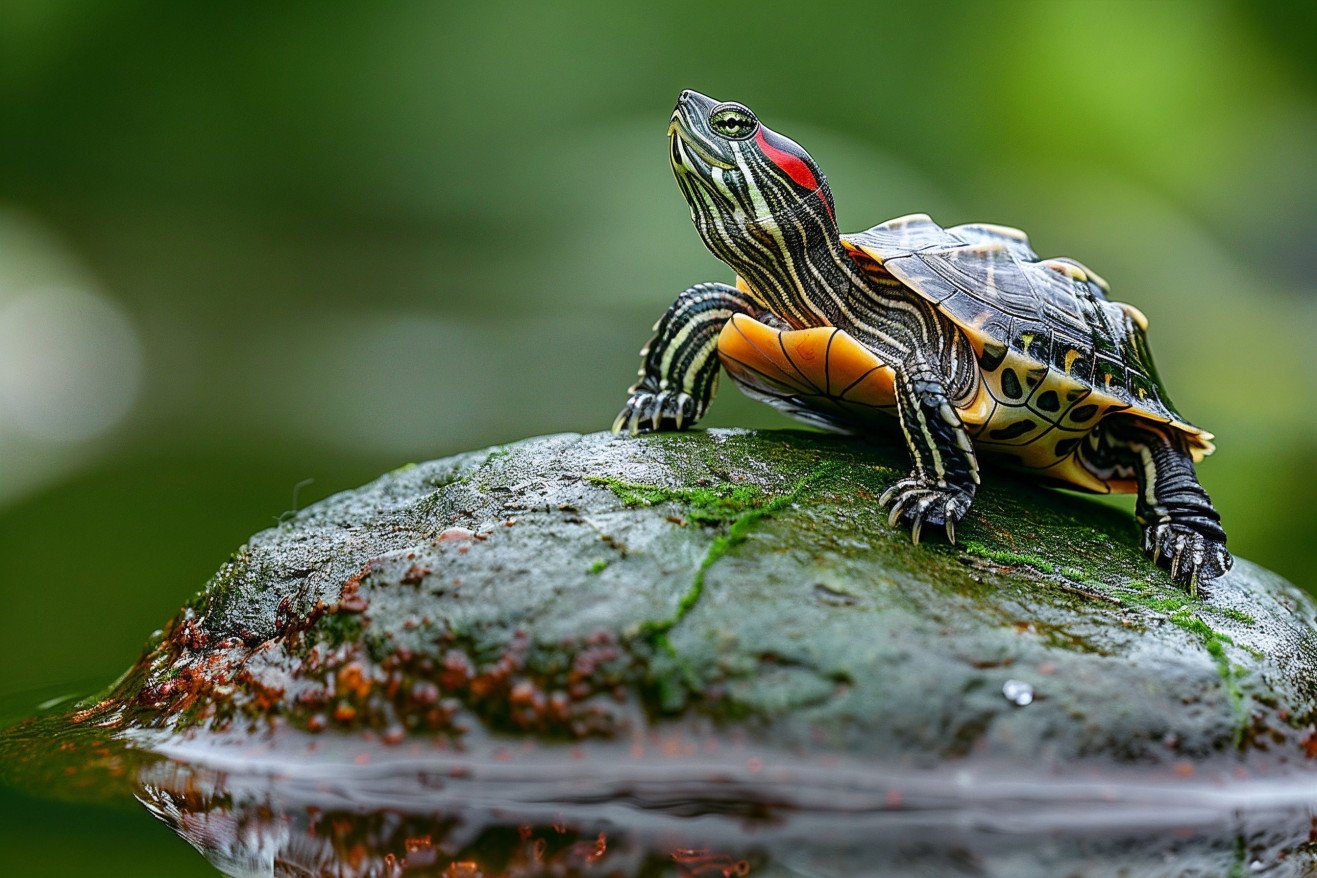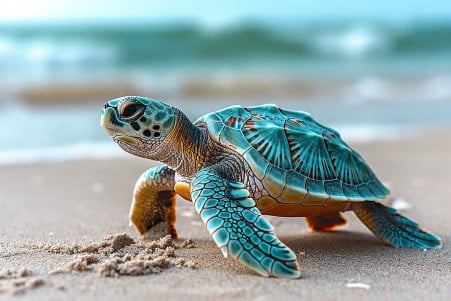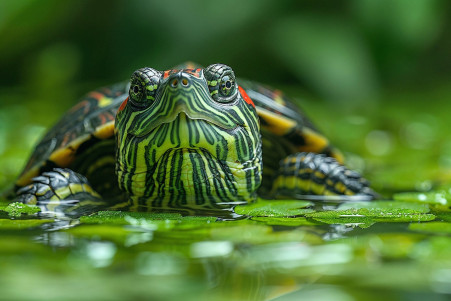Do Turtles Poop? Understanding a Turtle's Digestive System
17 May 2024 • Updated 17 May 2024

If you have a pet turtle, you may have found yourself asking whether or not your pet turtle poops and, if so, what it looks like when they do. Turtles do poop, and when they do, they use their muscles to push the waste out of their body through an opening called the cloaca.
In this article, we'll explore veterinary and herpetological studies to provide you with a more in-depth look at turtles' diets, digestive systems, and pooping habits. We'll also answer questions about how often turtles poop, what turtle poop looks like, and how to keep your turtle's habitat clean. Knowing about these natural behaviors can help you better understand the health and wellness of chelonians.
Do Turtles Poop?
How Turtles Digest Food: From the Mouth to the Cloaca
The turtle digestive system is similar to that of other vertebrates but has some key differences that are specific to reptiles. According to research from NC State, food is ingested through the mouth, travels down the esophagus to the stomach, and then through the small and large intestines. The cecum, which can be larger or smaller depending on the species, is located between the small and large intestines (or colon) and helps with water absorption.
The colon eventually empties into the cloaca, which is a special opening near the tail that is used to expel waste from the digestive, urinary, and reproductive systems. The colon is where indigestible food is formed into feces before it is released through the cloaca during defecation. The time it takes for food to move through the turtle's digestive system can depend on the turtle's body temperature, the amount of fiber and water in their diet, and how often they are fed, according to NC State's research.
What Is Healthy vs. Unhealthy Turtle Poop?
Healthy turtle poop is usually small, cylindrical, and dark green or brown, according to All Turtles' research on turtle poop. Anything that deviates from this in terms of color, texture, or the presence of undigested food could be a sign of a health problem. For instance, Turtle OMG says that colors that are not brown or green, a watery consistency, and a bad smell can all be signs of digestive issues, infections, or parasites.
Diarrhea, constipation, and changes in odor or frequency are other things to watch out for, according to Home & Roost. Herbivorous and carnivorous turtles may have different poop characteristics based on diet. Regularly checking a turtle's poop is important for catching any potential issues early, as Turtle OMG points out.
How Often Do Turtles Poop?
The frequency of turtle defecation can depend on a number of different things, according to The Observant Turtle's research. That said, most turtles will poop every few days to once a week. Baby turtles and tortoises, however, will poop more often, sometimes even every day.
A turtle's diet, the temperature of its environment, how hydrated it is, and its overall health can all play a role in how often it will poop, as mentioned by About The Turtle. Meanwhile, PetHelpful notes that if a turtle is pooping more often than usual, it could be a sign of parasites or another health issue.
That said, it's important to know what's normal for your turtle so that you can monitor its health. By keeping an eye on how often your turtle poops and what its poop looks like, you'll be able to catch any potential issues early.
How to Treat Turtle Constipation and Impaction
Constipation in turtles can be caused by a number of things, including dehydration, poor diet, or other health problems. Research from TurtleCare.net suggests that a diet that is too high in protein, too low in fiber, or too processed can lead to constipation. Dehydration is another common cause, particularly in box turtles.
Symptoms of constipation in turtles include straining to defecate, lethargy, and difficulty breathing or passing feces. A vet on JustAnswer even mentioned that in severe cases, the turtle may drag its hindlegs.
Treatment for less severe cases may include dietary changes to increase fiber, warm water soaks to help with hydration, and the use of mild laxatives like mineral oil or milk of magnesia. Zen Habitats also suggests that if constipation doesn’t improve with home remedies, you should consult a vet, as there may be an underlying issue that needs to be addressed by a professional.
To prevent constipation, make sure your turtle is properly hydrated, feed them a balanced diet that includes fiber, and keep their habitat clean. By making sure these things are in place, you can help ensure that your turtle stays regular and comfortable.
Using Turtle Poop as Fertilizer: How It Works and What to Do
Turtle waste can be a great natural fertilizer for plants and crops, as studies have found. This is because turtle poop is high in nitrogen, phosphorus, and calcium carbonate, which are all nutrients that are great for plants. In fact, farmers in China and some parts of India have been using turtle shells and waste to fertilize rice, corn, and wheat fields for years.
That said, the high ammonia content and potential pathogens in turtle poop mean that it needs to be properly composted, as a veterinary expert on JustAnswer explains. Once it's been aged and no longer smells, the resulting turtle poop can be added to compost piles or directly to soil. That said, it's important to use turtle manure in small amounts and watch how plants react to it to make sure they aren't being over-fertilized, which can be harmful according to research on Dave's Garden.
Conclusion: How to Keep Your Turtle Healthy by Monitoring Its Poop
Knowing what's normal and what's not when it comes to your turtle's poop is essential to good care. Regularly monitoring your turtle's poop can help you understand its health and well-being. Changes in color, consistency, frequency, or smell can signal potential problems.
It's important to make sure that you address issues like constipation or diarrhea as soon as you notice them so that your turtle isn't in any discomfort. By staying informed and being observant, you can make sure that your turtle stays healthy and happy.


